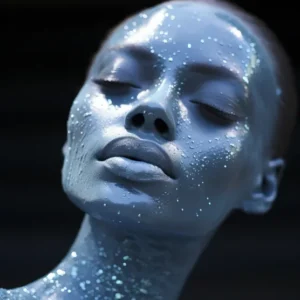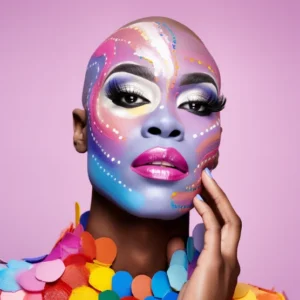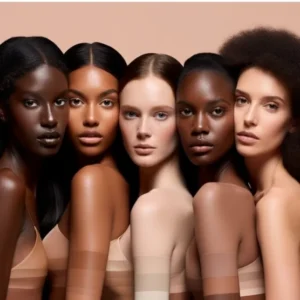In an era that celebrates diversity and individuality, the beauty industry is witnessing a transformative shift led by inclusive beauty brands. This article explores the pioneers in diversity, examining the efforts of brands that have embraced inclusivity in their product offerings, marketing strategies, and overall ethos. From challenging traditional beauty norms to championing representation, these brands are setting new standards for a beauty landscape that celebrates the uniqueness of every individual.
Embracing Diversity in Product Offerings
Shade Inclusivity
- Expansive Foundation Ranges: Inclusive beauty brands prioritize offering extensive foundation ranges, ensuring that individuals with a variety of skin tones find suitable matches.
- Adaptive Formulations: Pioneering brands are developing adaptive formulations that cater to a diverse array of skin types and concerns, promoting accessibility and choice.
Gender-Neutral Products
- Breaking Gender Norms: Some inclusive brands challenge traditional gender norms by creating gender-neutral product lines, recognizing that beauty knows no boundaries.
- Promoting Unisex Beauty: By promoting unisex beauty, these brands contribute to breaking down societal expectations surrounding gendered product choices.
Diverse Marketing Strategies
Authentic Representation
- Celebrating Real Beauty: Inclusive beauty brands champion authentic representation, featuring models and influencers from various backgrounds, body types, and abilities.
- Campaigns Beyond Beauty Standards: Pioneers in diversity create campaigns that go beyond conventional beauty standards, celebrating the unique features and stories of individuals.
Advocacy for Inclusivity
- Community Engagement: Brands actively engage with their communities, seeking input and feedback to ensure that their products and campaigns resonate with a diverse audience.
- Collaborations with Advocates: Collaborations with diversity advocates, influencers, and activists amplify the brand’s commitment to inclusivity and social change.
Fostering Accessibility
Affordable Options
- Affordable Quality Products: Inclusive beauty doesn’t equate to exclusivity in price. Many brands strive to offer high-quality, affordable products, ensuring that inclusivity is accessible to all.
- Accessible Retail Spaces: Brands are extending their commitment to inclusivity to the retail space, ensuring that physical stores are welcoming and accessible to individuals of all abilities.
Navigating Cultural Sensitivities
Cultural Sensitivity in Marketing
- Respecting Cultural Diversity: Brands recognize and respect cultural diversity, avoiding cultural appropriation and ensuring that their marketing is sensitive to the nuances of different communities.
- Global Perspectives: Inclusive beauty brands adopt a global perspective, acknowledging that beauty standards and preferences vary across cultures and regions.
Sustainable and Ethical Practices
Eco-Friendly Initiatives
- Cruelty-Free and Vegan Products: Many inclusive brands commit to cruelty-free and vegan product formulations, aligning with ethical and sustainable practices.
- Sustainable Packaging: Brands take steps towards sustainable packaging, minimizing environmental impact and aligning with the values of socially and environmentally conscious consumers.
Challenges and Progress
Challenges Faced by Inclusive Brands
- Industry Resistance: Inclusive brands may face resistance from traditional beauty standards within the industry, requiring persistence to challenge and change established norms.
- Education and Awareness: Ongoing efforts are needed to educate consumers and the industry about the importance of inclusivity, challenging deep-seated biases and preferences.
Measuring Progress
- Impact Metrics: Pioneering brands actively measure their impact, using metrics to track progress in inclusivity, representation, and the social and environmental responsibility of their practices.
- Setting Industry Standards: Inclusive beauty brands aspire to set industry standards, encouraging others to follow suit and collectively create a beauty landscape that reflects the diversity of the world.
The Future of Inclusive Beauty
Technological Innovations
- Customization and Personalization: Technological advancements enable brands to offer customized and personalized beauty solutions, catering to individual preferences and needs.
- Virtual Try-Ons: Virtual try-on tools enhance the online shopping experience, making it more inclusive by allowing users to visualize products on their unique features.
Inclusivity Beyond Beauty
- Social Impact Initiatives: Pioneering brands extend their impact beyond beauty, engaging in social impact initiatives that contribute to broader diversity and inclusion goals.
- Education and Advocacy: Brands actively participate in educational initiatives and advocacy work, recognizing their role in driving positive societal change beyond the beauty realm.
Conclusion
Inclusive beauty brands are at the forefront of a transformative movement that challenges norms, champions diversity, and redefines beauty standards. By fostering inclusivity in product offerings, marketing strategies, accessibility, cultural sensitivity, and sustainability practices, these brands are not just selling products; they are driving a paradigm shift in the beauty industry. As pioneers in diversity continue to lead the way, they inspire both consumers and the industry to embrace a vision of beauty that celebrates the uniqueness of every individual, setting a new standard for the future of inclusive beauty.



